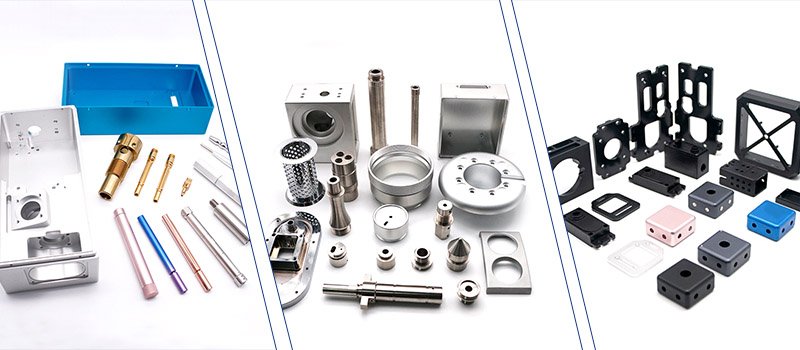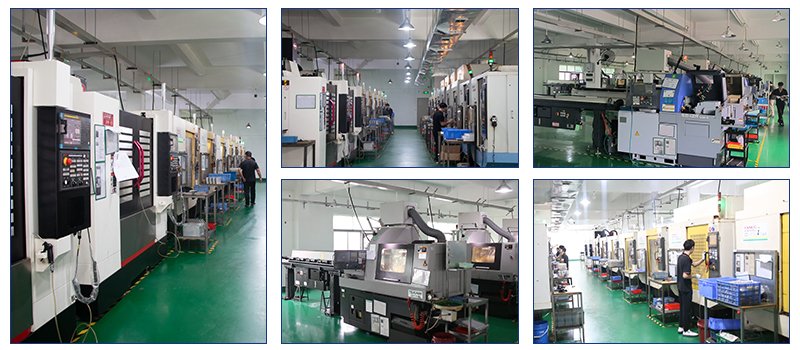When it comes to precision CNC machining, aluminum is a popular choice due to its lightweight, durability, and versatility. However, one issue that many manufacturers, including those in industries such as automotive, aerospace, and electronics, often face is the deformation of aluminum CNC parts after surface treatment. As a CNC machining expert at YL-Machining, I have dealt with this issue countless times, and today, I want to walk you through why aluminum parts deform after surface treatment and how to prevent it.
Whether you’re a designer, manufacturer, or someone in charge of quality control, understanding the underlying reasons behind this problem is essential. In this comprehensive guide, I will share my insights and practical advice to help you avoid this common pitfall and ensure that your CNC machined aluminum parts retain their shape and function after finishing treatments.
What Is CNC Machining and Surface Treatment?
To understand why deformation occurs, it’s essential to first grasp the basics of CNC machining and surface treatment processes. CNC (Computer Numerical Control) machining involves using computer-controlled tools to shape metal or other materials into precise parts. Aluminum, with its excellent machinability, is often used in various industries, but its susceptibility to deformation makes surface treatment an area of concern.
Surface treatment refers to processes like anodizing, painting, or coating that are applied to enhance the appearance, corrosion resistance, and wear resistance of the aluminum parts. These processes often involve heat or chemical reactions that can impact the physical structure of the material. While these treatments are vital for the part’s performance, they can also introduce new challenges.
The Role of Stress in Deformation
One of the primary reasons aluminum CNC parts deform after surface treatment is the residual stress that builds up during machining or the surface treatment process itself. When aluminum is cut or shaped, it undergoes localized plastic deformation. The material might not show visible signs of stress during the machining process, but once the part is treated (especially with heat), these internal stresses can cause the part to warp or distort.
For example, during anodizing, which involves an electrochemical process that thickens the natural oxide layer on aluminum, the part is exposed to an electrolytic bath. The material expands during the treatment, but as it cools, it can contract unevenly, leading to distortion.
How to Mitigate Residual Stress
- Stress Relieving: One of the most effective methods for reducing residual stress is to apply a stress-relieving heat treatment before surface treatment. This helps to “relax” the material and minimizes the chances of deformation during subsequent processes.
- Controlled Machining: Another step is ensuring that the machining process is as precise as possible. By minimizing tool deflection and ensuring proper cooling, you reduce the risk of introducing excessive stress into the aluminum part.
The Effect of Heat on Aluminum During Surface Treatment
Aluminum has a relatively low melting point compared to other metals, and it is particularly sensitive to temperature changes. Many surface treatments, like anodizing or powder coating, require heating the parts to certain temperatures, which can cause the material to expand and contract.
For instance, anodizing often involves immersing the part in an acid bath, followed by electrical current that generates heat. This heating can cause the aluminum to expand, and upon cooling, it may shrink unevenly. This uneven shrinking and expansion can lead to warping or bending of the part.
How to Prevent Deformation from Heat
- Optimize Temperature Control: To avoid deformation caused by heat, it is essential to maintain a consistent temperature throughout the surface treatment process. Precision in temperature control is crucial during both the anodizing and cooling phases.
- Use Aluminum Alloys: Different alloys of aluminum have different thermal expansion properties. Using the right alloy, particularly those known for better heat resistance and dimensional stability, can help reduce the chances of deformation during treatment.
The Influence of Machining Tolerances and Surface Finish
Another factor to consider is the machining tolerance and surface finish before applying the surface treatment. If the initial CNC machining process has been completed with tight tolerances, any subsequent treatment, such as anodizing or coating, may slightly alter the part’s dimensions.
Surface roughness can also play a role. A part with a rough surface will react differently to treatment compared to one with a smooth, polished surface. In some cases, rougher surfaces may lead to uneven coating thickness, which can contribute to warping or dimensional changes.
How to Control Tolerances and Finish
- Fine Tuning Tolerances: It’s critical to set the appropriate machining tolerances during the design phase. Parts that require high precision should be machined with allowances that account for the potential effects of the surface treatment.
- Pre-Treatment Surface Finishing: If possible, consider adding a pre-treatment surface finishing process that smooths out the surface. This can help achieve more uniform coating during the surface treatment phase and reduce the risk of deformation.
Material Considerations: Choosing the Right Aluminum Alloy
Not all aluminum alloys behave the same way when subjected to machining and surface treatments. Some are more prone to deformation than others. For example, alloys with a higher silicon content, like 356 or 7075, are more likely to experience thermal expansion and contraction, leading to distortion.
Selecting the Right Alloy for CNC Machining
When selecting an aluminum alloy, it’s important to consider the intended application and the surface treatment process. Alloys like 6061 are commonly used in CNC machining due to their excellent strength-to-weight ratio and good resistance to deformation. However, it’s always a good idea to consult with your material supplier or CNC expert to choose the best alloy based on your project needs.
Solutions for Deformation During Surface Treatment
So, what can you do to prevent deformation? Here are some key strategies that can help minimize or even eliminate this problem:
- Pre-Treatment Heat Treatment: As mentioned earlier, a pre-treatment heat treatment to relieve residual stress is essential in preventing deformation.
- Post-Treatment Aging: After surface treatment, some parts benefit from a post-treatment aging process. This allows the material to stabilize and further reduces the risk of deformation.
- Appropriate Surface Finish: Ensure that the surface finish is optimal before applying any surface treatment. This includes controlling roughness, achieving the right tolerances, and polishing the part if necessary.
- Custom Fixtures: During the surface treatment process, using custom fixtures or jigs to support the part can prevent movement and deformation caused by uneven treatment or temperature fluctuations.
Conclusion: How to Avoid Deformation in Aluminum CNC Parts
In conclusion, deformation of aluminum CNC parts after surface treatment is a multifaceted issue that stems from a combination of residual stress, heat-induced expansion and contraction, and the interaction between machining tolerances and surface finish. However, by understanding these factors and implementing a few proactive strategies—such as stress relieving, optimizing heat treatment processes, selecting the right alloys, and paying attention to surface finishes—manufacturers can significantly reduce the chances of distortion.
As always, the key to achieving high-quality, precise aluminum CNC parts lies in the details. By understanding how each step in the machining and surface treatment process affects the final part, you can ensure that your aluminum parts perform as expected—both in terms of function and aesthetics.
So, the next time you’re faced with the challenge of surface treatment-induced deformation, you’ll have the tools and knowledge to address it effectively. If you have any questions or need further advice on CNC machining or surface treatment, don’t hesitate to reach out. Let’s work together to ensure your parts meet the highest standards of quality!






